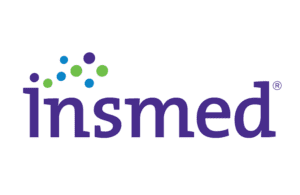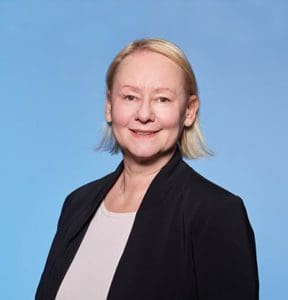 Many large drug developers employ individual groups or teams independently working on discrete steps in the drug development process.
Many large drug developers employ individual groups or teams independently working on discrete steps in the drug development process.
Rare disease biopharma Insmed (NSDQ:INSM) differentiates itself through its focus on patients with rare diseases. To that end, the company works to ensure collaboration between various departments to consider questions related to the applicability of a given molecule and the potential impact it could have on patients.
The company has won FDA approval for Arikayce (amikacin liposome inhalation suspension), a novel treatment of Mycobacterium avium complex (MAC) lung disease in conjunction with an antibacterial drug regimen.

Dr. Martina Flammer
“Many companies speak about patient focus and patient-centricity,” acknowledged Dr. Martina Flammer, the company’s chief medical officer. But often, that focus can be intermittent or can begin midway through development.
“Especially in rare diseases where you have very small patient populations compared to the broader disease spectrums, you have to understand truly what is the need that we’re solving for,” Flammer said.
Dr. Gene Sullivan, Insmed’s chief product strategy officer, said patient-centricity motivates both its employees and patients. “In some of these rare diseases, the patients feel like there is no one putting in the effort to find a treatment or a cure for them,” he said.
“It’s a hard journey for them even to get a diagnosis,” Flammer said. “They’re often frustrated.” But as a result, patients with rare diseases are uniquely motivated to assist the medical establishment with diagnosis and help drug developers evaluate potential therapies.
In any event, rare diseases are not trivial. Researchers have identified some 7,000 rare diseases. In total, such conditions affect between 25 and 30 million Americans, Flammer estimated.
And yet, the bulk of those patients will not have treatments available in the foreseeable future without a change in approach. The pharmaceutical industry needs to accelerate the pace of developing therapies for people with rare diseases, Flammer said. If the industry maintains its current speed and success rate for developing drugs for rare diseases, there will only be available treatments for “less than 10% of those 7,000 diseases,” Flammer estimated.

Dr. Eugene Sullivan
While basic science and research have advanced considerably in recent years, “it has been more challenging sometimes in clinical practice and clinical development to catch up and deliver something to patients,” Flammer said.
A central strategy that can help accelerate that timeline is collaboration motivated by a single objective, Sullivan said. “If the so-called ‘silos’ are in place, people can feel like their job is to get something done to get it to the next person who will do the next step,” he said.
Remembering the goal of fundamentally improving the lives of patients can serve as a north star metric. For employees working on synthesizing compounds, continually reflecting on the goal of helping patients can increase the likelihood of discovering a drug that could have a fundamental impact rather than a marginal benefit, Sullivan said. “They’re able to feel closer to patients even though what they’re working on may be years away from reaching them,” he explained. “The aim is not just to move something along in the development pipeline, but is really aimed at the patient.”